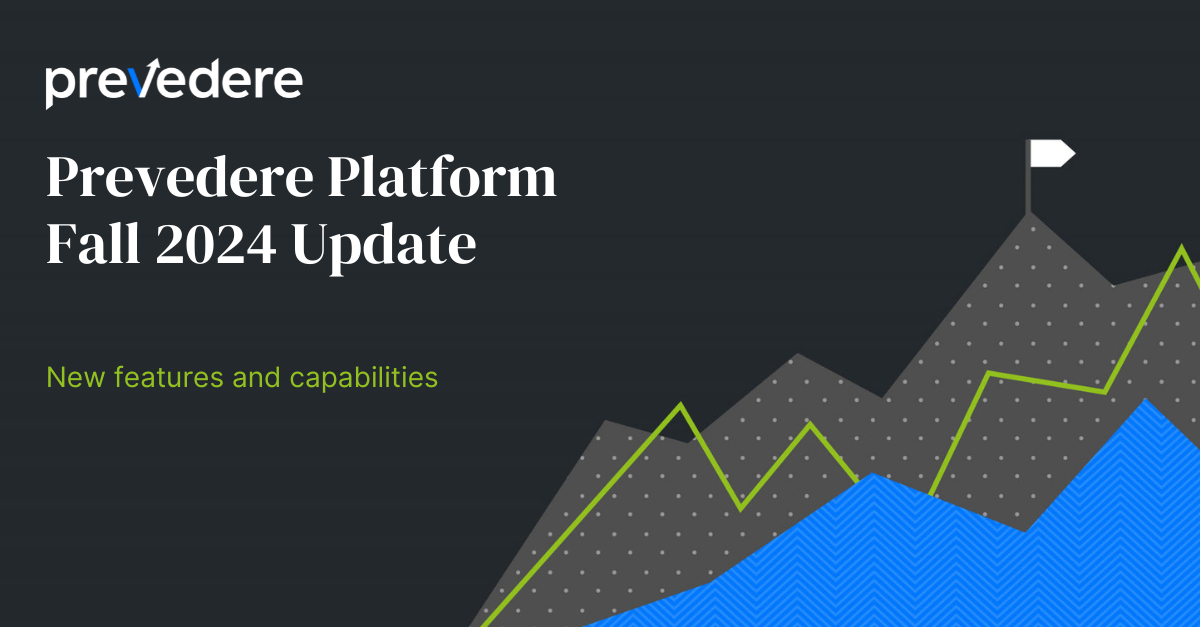Last Updated: December 14, 2022
The Harvard Business Review tells us that nearly 85 percent of a company’s performance is dependent upon external factors. Yet with millions of data sets available, many companies don’t know where to look to determine which external drivers are affecting business performance.
Though each individual business, industry and region is affected differently by different factors, these are some of the most common we see among our customers.
1. Consumer Sentiment
As the state of the U.S. economy fluctuates, consumer sentiment indicates how confident people feel in purchasing houses, cars, electronics, travel and other goods and services. Our prediction of this year’s Black Friday and Cyber Monday shopping is a great example of how strong consumer sentiment is an indicator of a positive uptick in retail sales.
2. Real Disposable Personal Income
By tracking the rise and fall of the amount of (inflation adjusted) money consumers have remaining after paying bills, retailers, manufacturers and service providers are able to determine how much consumers have to spend. Combined with consumer sentiment, companies can better anticipate whether consumers have money, and whether or not they are willing to spend it.
3. Residential Real Estate Market
Housing starts and sales of existing homes are strong indicators of demand for building materials, home goods and even automobiles. Additionally, the health of the real estate market is a powerful link to the overall health of manufacturing, employment and consumer spending.
4. Oil / Gas Prices
Changes in oil and gas prices have a heavy impact on industries worldwide, including tourism and travel, manufacturing and e-commerce. From a consumer’s willingness to drive to a store to the cost to ship goods, oil and gas prices play a role in both hard costs and consumer behavior.
5. Labor Market and Wages
Changes in the job market and wages affect consumers’ willingness and ability to buy. Combined with the personal savings rate, which shows how much of their income consumers are stashing away, these metrics are additional indicators of consumers’ buying behaviors.
6. Weather Data
Severe winter weather, harsh droughts, heavy rains and extreme temperatures all have huge implications for retailers, global manufacturers and construction companies. From transportation shut downs to construction delays, severe weather can cost companies millions. In fact, a one-day shut down in New York can translate into $152 million in lost retail sales, according to an IHS Global study.
7. The Strength of the Dollar
Many global corporations cited currency movement as the top reason for missing their quarterly forecasts this year. The strength of the dollar has huge implications for the cost of making and buying goods and services around the world. Companies who can tie in the rise and fall of the U.S. dollar directly to the costs of making, selling and shipping their products will have a better view of how sales will fare over the next quarter.
8. Raw Material Costs
Fluctuations in raw material costs can reveal more than just a potential price change in the product being manufactured. As certain materials become more or less expensive to make/purchase, demand and even consumer preferences are affected.
9. Industrial Production
Many enterprises are surprised to learn that industrial production of key commodities, such as polymers, cardboard, plastics, glass, dairy, coffee, cocoa, wheat and corn are hidden indicators of their future performance.
10. Corporate Profits
Corporate profits are a strong leading indicator for the prediction and planning for investment in capital goods, construction, labor related expenditures and workforce planning. This indicator is particularly important for B2B organizations.
Leverage External Data Better Than Competitors
When leading food company General Mills, Inc. sales fell by 4%, the company cited the strong U.S. dollar as a key reason for the drop. Likewise, the shares of Micron Tech, a multinational advanced manufacturer, dropped 6% in December. The company cited an increase in the overall cost of industrial production as a reason for the missed forecast. Examples of companies missing forecasts due to external factors are in the news weekly, yet many don’t know the next step to take to improve their forecast accuracy. The major pain point companies face today is how to gain actionable insights from external big data – better than and before their competitors. Identifying leading indicators is the first step to incorporating predictive analytics into business forecasts.
From anticipating changes in the overall cost of making and shipping products to predicting the rise and fall of future sales and demand, identifying and quantifying leading indicators will help companies craft more accurate financial forecasts and, ultimately, save money and increase revenue. To learn more about how to leverage leading indicators for your business, contact us.



